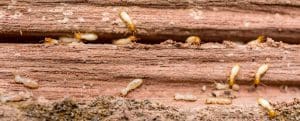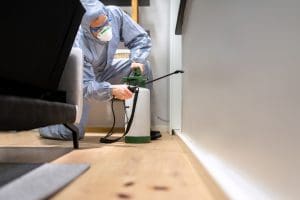Termites have the ability to create extensive damage to buildings and homes. Termite infestations can pose structural problems, resulting in costly repairs if not taken care of immediately. Here is what you should know about termites and how to identify termite damage in your home. If you sense that there are termites in your home, contact your local pest inspection company for a home inspection straightaway.
Types of Termites
There are three types of termites to look out for when inspecting your home: dry wood, damp wood, and subterranean termites. All three of these types of termites are common, both indoors and outdoors. Should you suspect a termite infestation in your home, contact your local pest inspection company today.
Dry wood termites live in dry wood habitats, particularly in homes and dry firewood. These pests can travel into houses via furniture and dry firewood, and gain access to wood through small holes. Dry wood termites do not need soil to survive – only wood. The most damage done by dry wood termites is through support beams, floors, and walls.
Damp wood termites seek out moisture-damaged wood, such as rotted trees. Moisture in homes, such as faucets and humidity in kitchens, bathrooms, and basements, are most likely to attract damp wood termites. Damp wood termites cannot survive in a dry environment, as they need frequent contact with water and high humidity to survive.
Subterranean termites seek out moisture-rich environments, like that of damp wood termites. One major difference between subterranean termites and damp wood termites is that subterranean termites build mud tunnels to reach food sources and typically burrow underground.
 What are termites attracted to?
What are termites attracted to?
Termites look for places they can feed on wood and cellulose material. Several common materials that termites tend to eat are lumbar, paper, firewood, framing, books, dry plants, and furniture. Some termites, such as damp wood and subterranean, will seek out moist soil or humid environments. Outdoors, termites are attracted to downspouts or gutters that do not drain properly. Indoors, termites are attracted to wet, humid places, such as the laundry room, bathroom or basement. Additional places termites will hide out in are attics, crawl spaces, and garages. Any place that is warm, dark, and/or wet are perfect for termites. Since cold temperatures will kill termites, they are less-likely to be seen outside during the cold, wintery months. Termites like to be warm and cozy, and tend to huddle together to create warm spaces. Contact your local pest inspection company should you need removal of termites.
How Can I Prevent Termites?
Common signs of termites include damaged wood, clicking noises, tunneling in wood or mud, and tight fitting doors or windows. Keep an eye out for wing fragments or droppings on window sills, as this may be a sign of a termite infestation. For more information on how to check for termites, contact your local pest inspection company.
Take the time to inspect your home annually. Check the foundation of the house and seal cracks and crevices that termites or other pests could enter. Inspect windows, door frames, trip, eaves, siding, and attics for damaged wood that will need to be replaced. Inspect pipes and faucets for leaks, repairing or replacing them as necessary. Reduce the humidity in your home, especially crawl spaces, by making sure there is proper ventilation. Contact your local pest inspection company if you feel there may be a termite infestation in your home.
Prevent Pest Control Termite Removal
If you need termite removal services from professionals, contact Prevent Pest Control today! Our exterminators are experienced in termite removal and prevention that will keep your home and building safe from termites. Visit our website or call (440) 517-5581 for more information!
Contact Us
We are always here to help. Looking forward to hearing from you!

